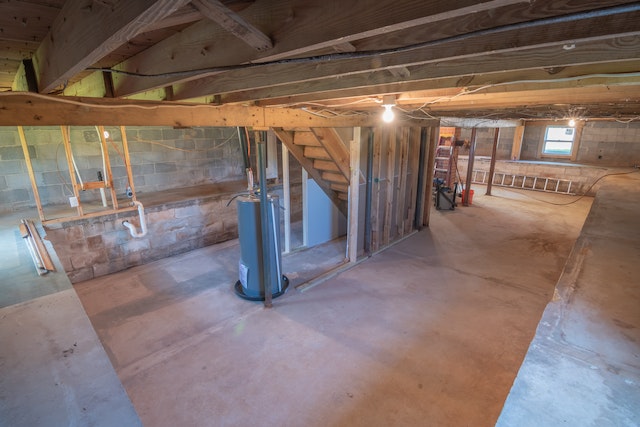For any homeowner who's taken on the task of remodeling an old house, there are many different variables to consider. From how much you're willing to spend and the scope of your project, to the nuances involved when dealing with antique homes - it can all be a bit overwhelming. Fortunately, understanding essential first steps during the renovation process can help to streamline taking on such a feat. Whether you’re in search of tips or want more insight into what should go at the top of your list when beginning renovations - this article is here as your guide!
 |
| Do These Things First When Remodeling An Old House [image: pexels] |
Get a Professional Home Inspection
When you're in the process of buying a new home, it's vital to get a professional home inspection. A home inspection can reveal issues that aren't immediately apparent to the untrained eye. For example, a professional inspector can help identify whether windows and doors need fixing. Additionally, they'll take a close look at the HVAC, plumbing, and wiring, giving you peace of mind that your new home is up to code and won't cause you any unexpected headaches down the road. More importantly, professional home inspectors will also check for mold, pests, and structural damage - all of which could cost you thousands if left undetected.
Research and Learn About Historic Preservation Ordinances
Historic preservation ordinances exist to protect the unique architecture and cultural heritage of a community. Researching these ordinances and what they entail is an essential part of understanding the history and identity of a city. By learning more about these regulations, you will gain a better understanding of the measures put in place to ensure that a community's history is preserved for generations to come. The more you know about historic preservation, the better equipped you will be to advocate for the preservation of historical buildings and landmarks in your community.
Consider Mechanical Upgrades to Increase Energy Efficiency
As we become more aware of our impact on the environment, finding ways to reduce our energy consumption has become a priority for many. One effective way to do this is by considering mechanical upgrades to increase energy efficiency. Not only can this save you money on your energy bills, but it can also help to reduce your carbon footprint. There are a variety of upgrades that you can make, from installing energy-efficient lighting or appliances to improving your HVAC system. While these upgrades may require an upfront investment, they will ultimately pay off in both financial and environmental benefits.
Assess Structural Foundation Issues
Whether you are looking to purchase a new home, renovate an existing property, or simply ensure the longevity of a structure, it is essential to have a thorough understanding of its foundation. From cracks in the walls to uneven floors and doors that won't close properly, these are all signs that something may be amiss. Fortunately, with the help of a qualified professional, it is possible to detect and address any foundation issues early on, before they become major problems. So if you want to safeguard your investment and protect the people who use your building, be sure to take the time to assess its foundation thoroughly.
Control Moisture Levels in Basement and Crawl Spaces
A damp, musty-smelling basement or crawl space can be disconcerting for homeowners. It's not only unpleasant to the senses but can also trigger respiratory issues and mold growth. To avoid these issues, homeowners should take steps to control moisture levels in their basements and crawl spaces. This may entail installing a dehumidifier, using a sump pump, or waterproofing walls and floors. Investing in moisture control measures will not only make these below-ground areas more pleasant to use but also will preserve the value of the home and ensure a healthy living environment.
 |
| [image: pexels] |
Lead paint is a silent culprit that has been lurking in many homes or buildings. It can cause serious health risks if exposed for extended periods, especially to young children and infants. The issue with lead paint is that it can be challenging to identify, and there are several potential sources that may have been overlooked. Houses built before 1978 are likely to have lead paint on the walls, and it is crucial to check the peeling or chipping paint, as well as the soil near the house. Other sources of lead paint are old toys, antique furniture, and dishware.
Plan for Waste Disposal Before You Begin Your Project
Not only does this ensure the safety and cleanliness of your work environment, but it also helps reduce environmental impact. Whether you're renovating a home or building a new structure, taking the time to plan for waste disposal can save you time, money, and potential legal issues. Consider the types of waste you'll be generating and research local disposal options. It's important to dispose of hazardous materials properly, such as chemicals and construction waste. Don't let waste disposal be an afterthought – plan ahead for a successful and sustainable project.
By starting with a professional home inspection, researching historic preservation ordinances, upgrading your home's energy efficiency, assessing foundation issues, controlling moisture levels in basement and crawl spaces, identifying lead paint sources, and planning for waste disposal before beginning your project, you will give yourself the best chance at success. It is important to understand that there are immense difficulties that come with taking on a remodel on an older house.

No comments:
Post a Comment
Please Leave a Comment to show some Love ~ Thanks